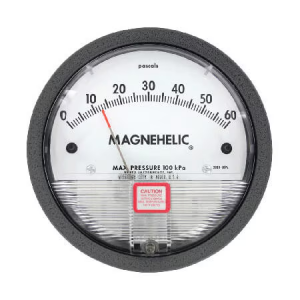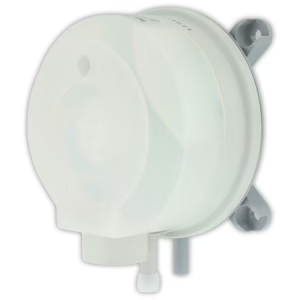Why Air Filter Gauges and Switches Matter (Even If You’ve Never Thought About Them)

If you have an air filter—whether in your home, office, or an industrial building—it’s doing a big job: cleaning the air of everything from dust and pollen to smoke, bacteria, and even tiny mold spores. But over time, filters get dirty and stop working as well. So how do you know when it’s time to change or clean your filter?
That’s where air filter gauges and switches come in. Think of them as the “check engine” light for your ventilation system.
 What Does an Air Filter Gauge Do?
What Does an Air Filter Gauge Do?

An air filter gauge measures how hard air is pushing through your filter. As the filter fills with dirt, air can’t flow through as easily—so pressure builds up. The gauge picks up on that pressure change and lets you know when the filter needs attention.
It doesn’t tell you how “efficient” the filter is—it just tells you when it’s time to change it. (Efficiency is a separate topic that depends on what the filter can actually catch.)
 Why Not Just Change Filters Regularly?
Why Not Just Change Filters Regularly?
Because not all environments are the same. For example:
- A filter in a city full of pollution might clog up faster.
- A cleanroom for electronics needs to be spotless, while a home just needs to keep out dust and pollen.
- Some filters last months, others just weeks.
A filter gauge helps you change the filter exactly when needed—not too early, not too late.
 Why Not Just Check Visually?
Why Not Just Check Visually?
Unfortunately, filters don’t always look dirty when they’re clogged. Visual checks can be misleading. Pressure readings from a gauge are much more reliable.
 What About Air Filter Switches?
What About Air Filter Switches?

An air filter switch works with the gauge to automatically signal a warning or activate another system (like a fan or alarm) when the filter needs changing. This is especially useful in places where air quality is critical.
 What Happens If You Don’t Use Gauges or Switches?
What Happens If You Don’t Use Gauges or Switches?
If you wait too long to change your filters:
- Airflow drops, causing poor ventilation.
- Systems work harder, wasting energy and increasing costs.
- In some cases, dirty filters can even let pollutants leak back into the air.
If you change them too soon:
- You waste money replacing still-useful filters.
Gauges and switches strike the perfect balance between performance and efficiency.
 What Types of Filters Use These?
What Types of Filters Use These?
- Oily Filters (called viscous impingement): Usually changed when the gauge reads 0.5” of water pressure.
- Dry Filters: These vary a lot, so the manufacturer usually gives specific pressure ranges.
- Electronic Air Cleaners: These need regular schedules but also use mechanical pre-filters that should be checked using pressure.
 What if Your Gauge Shows Something Weird?
What if Your Gauge Shows Something Weird?
A lower-than-expected reading might mean:
- The air isn’t flowing enough (maybe the system is off or the wrong filter is used).
- Air is leaking around the filter instead of through it.
A higher-than-expected reading might mean:
- The system is pushing too much air.
- The filter is wrong or already too dirty.
Both issues can mess with filter performance and overall system balance.
 Quick Installation & Troubleshooting Tips:
Quick Installation & Troubleshooting Tips:
- Make sure all connections are tight.
- Double-check that pressure tubes are not blocked.
- Ensure the gauge is calibrated correctly (zeroed out before use).
- Install pressure tips properly so they face the right way in the airflow.
In Summary
Air filter gauges and switches help you get the most out of your filters—not too early, not too late. They save you money, protect your air quality, and keep your system running smoothly.
If you’re responsible for any kind of HVAC or ventilation system, these tools are a smart, simple way to stay ahead of problems before they become costly.



